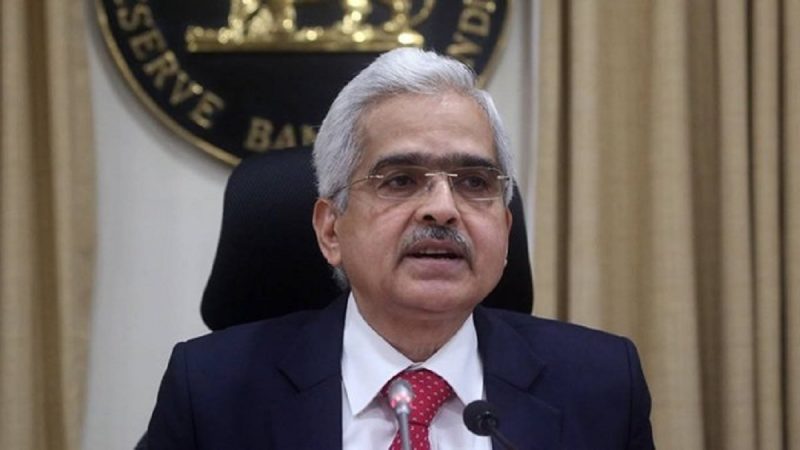(ATF) India would like to be a digital economy powerhouse that embraces emerging technologies and uses them to boost economic activity. With that goal in mind, the Reserve Bank of India on Monday said it is exploring the possibility of a digital version of the rupee.
The Reserve Bank (RBI) said it is examining the need to introduce a central bank digital currency, and if it finds that the country should have one, it will also look for ways to make it happen.
“Private digital currencies or virtual currencies or crypto currencies have gained popularity in recent years. In India, the regulators and governments have been sceptical about these currencies and are apprehensive about the associated risks. Nevertheless, the RBI is exploring the possibility as to whether there is a need for a digital version of fiat currency and in case there is, then how to operationalise it,” the central bank said.
A Central Bank Digital Currency or CBDC is the digital form of a country’s money. The present concept of a CBDC utilizes blockchain and distributed ledger technology like cryptocurrencies. But a CBDC is different from virtual currency and cryptocurrency because the latter is decentralized – they are not issued by the state and lack the legal status declared by the government.
The creation of a CBDC could fuse the best of both worlds – the convenience and security of digital form like cryptocurrencies, and the regulated, reserved-backed money circulation of the traditional banking system. Each CBDC unit can act as a secure digital equivalent of fiat currency and can be used as a payment mode, a store of value, and a unit of account.
“This has made central banks around the world examine whether they could leverage on technology and issue fiat money in digital form,” the RBI said.
Baby steps
But until recently, India and consequently the RBI, viewed virtual currencies and other cryptocurrencies with extreme suspicion, citing their involvement in money laundering and drug trafficking. Time and again, the RBI has also advised investor communities and financial institutions to exercise caution.
In April 2018, for instance, the RBI even banned cryptocurrencies that, according to reports, caused immense damage to a cluster of investors who, taking a cue from the global markets and their peers overseas, had invested in such virtual currencies.
However, following demands for a judicious system to regulate the cryptocurrency ecosystem from the sector, and a subsequent challenge to the RBI ban, the Supreme Court of India struck down the RBI’s circular that had prohibited banks and financial institutions from providing such services.
“But with a few countries (such as Sweden, Russia, Iran, China, Japan, and USA) already testing their CBDCs, the RBI too has now realised that there is a need to explore the feasibility of digital money,” Dinkar Kalra, a fintech lawyer and a solicitor at the Courts of England and Wales told Asia Times Financial.
“If regulated properly, a cryptocurrency in the form of a CBDC can offer a number of advantages in terms of reducing paper currency. India is keen on reducing the use of paper currency to check generation of illicit or unaccounted money and to monitor the flow of money and monetary transactions,” he added.
A ‘work in progress’
According to RBI however, despite the digital mode that has arisen in recent years, migration from a predominantly cash-based economy to a digital one is a “work in progress,” that may take long to eventuate.
“Considering the diversity of users in the payment ecosystem, there is still a long road to be travelled, especially across geographies and societal cross-sections like senior citizens and migrant workers,” the RBI said.
Besides, despite growth in adoption of digital payments across geographies and cross-sections of the society, the rate of adoption has been different. This is because of lack of digital financial awareness and inadequate digital financial literacy.
Digital payments have grown, from nearly 5 billion transactions with a value of Rs 96 trillion ($1.3 trillion) in the 2011 financial year, to 16.23 billion transactions with a value of $47 trillion in the 2020 financial year. This represents a compound annual growth rate of 12.5% and 43% in terms of volume and value, respectively according to the RBI.
There is also a lack of clarity over the status of cryptocurrencies in India.
“One of the concerns around CBDC is whether it can be decentralised. Generally, cryptocurrencies are based on the blockchain system which means that such systems are usually decentralised and rely on maths rather than a single third party. However, the RBI as a monetary regulator is a single entity so whether there would be any decentralisation when RBI conceptualises the CBDC would be interesting to see,” Jaideep Reddy, a technology lawyer at Nishith Desai Associates told ATF.
This means, it is still unclear whether RBI would mandate a CBDC holder to maintain a compulsory account with itself, or whether it will allow the banks to operate CBDC accounts. Will a holder be able to use the CBDC like cash, for a purchase or other transaction without the need for a bank? And, who is going to validate a transaction or be the gatekeeper of a transaction? These are some grey areas the RBI will have to ponder and decide on.
But, Reddy said, if there is a way to move the entire economy’s monetary transactions digital without compromising on privacy, “there could be clear benefits of using CBDC to check money laundering, tax evasion, etc.”
























